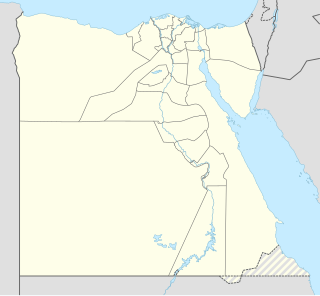 W
WAkhenaten, also spelled Echnaton, Akhenaton, Ikhnaton, and Khuenaten, was an ancient Egyptian pharaoh reigning c. 1353–1336 or 1351–1334 BC, the tenth ruler of the Eighteenth Dynasty. Before the fifth year of his reign, he was known as Amenhotep IV.
 W
WAmarna is an extensive Egyptian archaeological site that represents the remains of the capital city newly established and built by the Pharaoh Akhenaten of the late Eighteenth Dynasty, and abandoned shortly after his death. The name for the city employed by the ancient Egyptians is written as Akhetaten in English transliteration. Akhetaten means "Horizon of the Aten".
 W
WThe Great Hymn to the Aten is the longest of a number of hymn-poems written to the sun-disk deity Aten. Composed in the middle of the 14th century BC, it is varyingly attributed to the 18th Dynasty Pharaoh Akhenaten or his courtiers, depending on the version, who radically changed traditional forms of Egyptian religion by replacing them with Atenism.
 W
WKV55 is a tomb in the Valley of the Kings in Egypt. It was discovered by Edward R. Ayrton in 1907 while he was working in the Valley for Theodore M. Davis. It has long been speculated, as well as much-disputed, that the body found in this tomb was that of the famous king, Akhenaten, who moved the capital to Akhetaten. The results of genetic and other scientific tests published in February 2010 have confirmed that the person buried there was both the son of Amenhotep III as well as the father of Tutankhamun. Furthermore, the study established that the age of this person at the time of his death was consistent with that of Akhenaten, thereby making it almost certain that it is Akhenaten's body. However, a growing body of work soon began to appear to dispute the assessment of the age of the mummy and the identification of KV55 as Akhenaten.
 W
WThe Northern Palace, also called the North Palace, is located in the abandoned Northern Suburbs of the city of Ahketaten. This palace should not be confused with the North Riverside Palace further north in Amarna.
 W
WThe ancient Egyptian noble Parennefer was Akhenaten's close advisor before he came to the throne, and in later times served as his Royal Butler, an office which brought him into intimate contact with the king. His titles include "The King's Cup Bearer," "Washer of the King's Hands," "Chief Craftsman," and "Overseer of All the Works in the Mansion of Aten." He was instrumental in imposing the "Amarna style" in architecture.
 W
WThe Royal Tomb of Akhenaten is the burial place of the Pharaoh Akhenaten, in the Royal Wadi in Amarna.
 W
WSmenkhkare was an Egyptian pharaoh of unknown background who lived and ruled during the Amarna Period of the 18th Dynasty. Smenkhkare was husband to Meritaten, the daughter of his likely co-regent, Akhenaten. Very little is known of Smenkhkare for certain because later kings sought to erase the Amarna Period from history. Because of this, perhaps no one from the Amarna Interlude has been the subject of so much speculation as Smenkhkare.
 W
WThe Tomb of Panehsy is a sepulchre in Amarna, Upper Egypt. It was erected for the First servant of the Aten in the house of Aten in Akhet-Aten, Second prophet of the Lord of the Two Lands Neferkheprure-Waenre (Akhenaten), the sealbearer of the King of Lower Egypt, Overseer of the storehouse of the Aten in Akhetaten, Overseer of cattle of the Aten in Akhet-Aten.
 W
WTomb TT188, located in the necropolis of El-Khokha in Thebes in Egypt, is the tomb of the Steward and King's Cupbearer Parennefer. It has been excavated by the Akhenaten Temple Project.